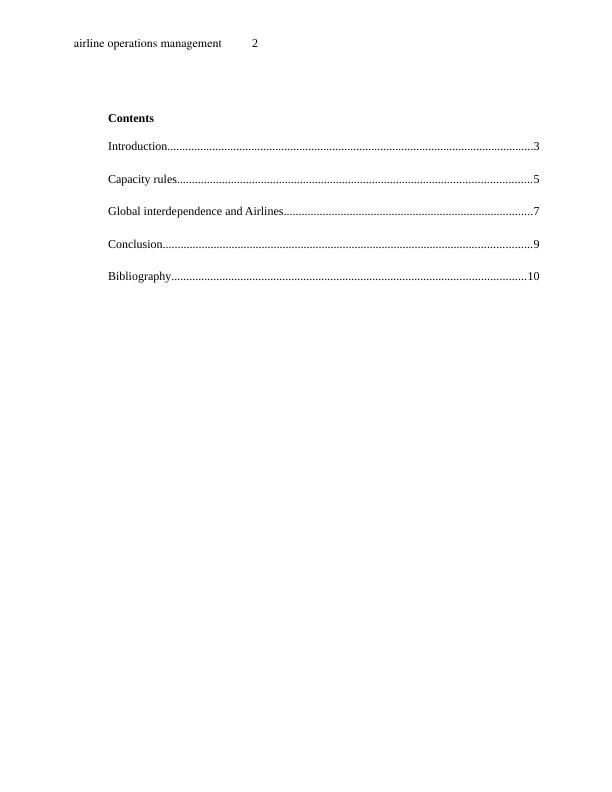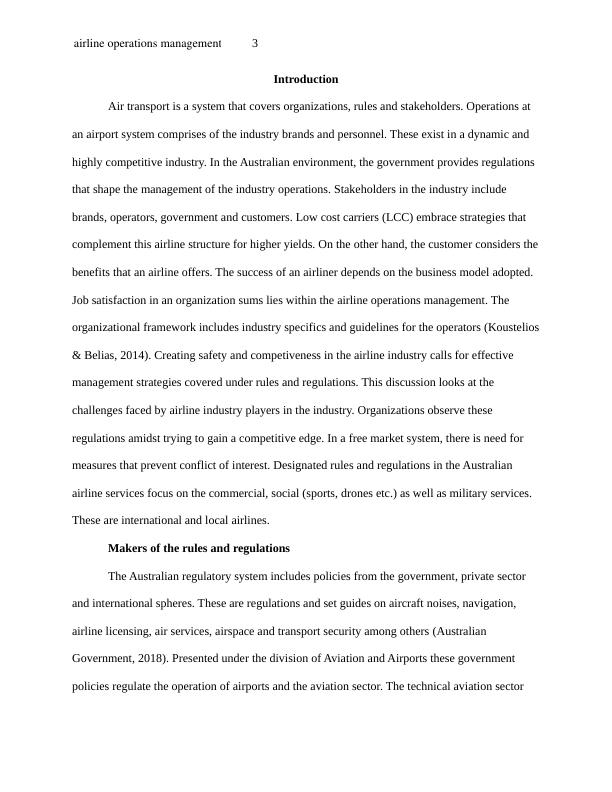Challenges and Regulations in Airline Operations Management in Australia
This assignment is about providing an overview of the structure and nature of airline operations in Australia, international standards in the aviation industry, and Australian legal and regulatory requirements.
11 Pages2751 Words57 Views
Added on 2023-06-08
About This Document
This article discusses the challenges faced by airline industry players in Australia and the regulations that shape the management of the industry operations. It covers capacity rules, global interdependence, and airline implementation procedures. The article also explores the makers of the rules and regulations, the business models, and the global interdependence and airline implementation procedures. The subject is Airline Operations Management, and the course code is not mentioned. The college/university is not mentioned.
Challenges and Regulations in Airline Operations Management in Australia
This assignment is about providing an overview of the structure and nature of airline operations in Australia, international standards in the aviation industry, and Australian legal and regulatory requirements.
Added on 2023-06-08
ShareRelated Documents
End of preview
Want to access all the pages? Upload your documents or become a member.
Aviation Management: Regulations, Compliance, and Best Practices
|9
|2033
|267
Airspace Management and Air Traffic Services
|13
|3951
|92
Role of Standard Operating Procedures in Ensuring Safe Air Travel
|7
|1262
|196
Aviation Management: Roles of ICAO, FAA and EASA
|13
|2992
|330
Air Traffic Control Question 2022
|4
|673
|35
Law Assignment | Air Law and Regulations
|19
|5205
|238




